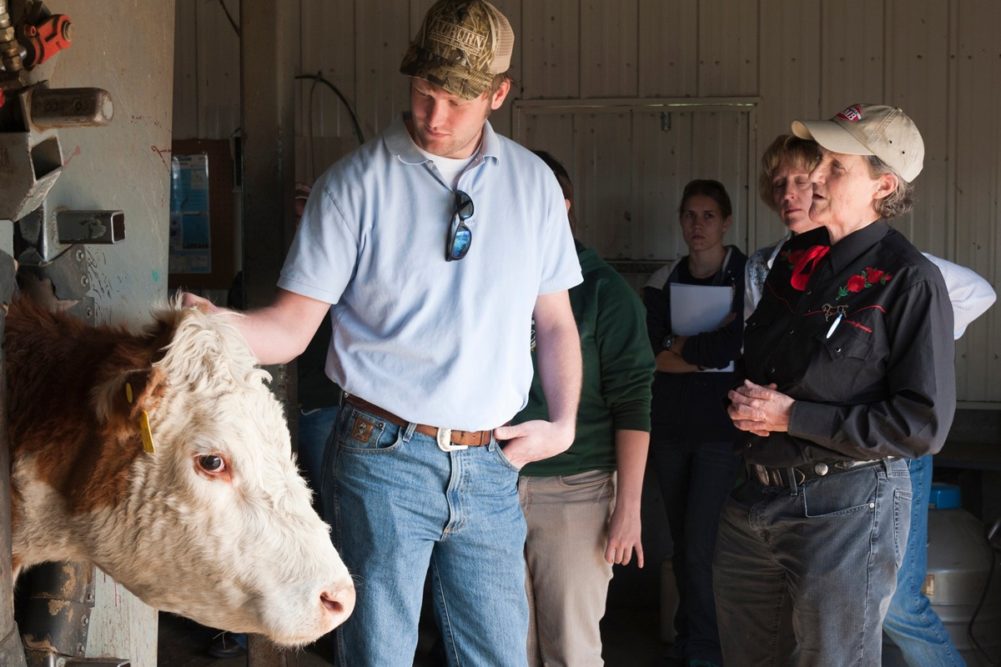Cattle have been accused of wrecking the environment. What many people do not know is that when regenerative rotational grazing is done right, it improves soil health and helps to sequester (store) carbon. About 20% of the habitable land in the world cannot be cropped. It does not have enough water in the ground or rain falling from the sky to grow crops. The only way to produce food on this land is to graze it. In the United States, some of the land that can only be grazed is in eastern Colorado, Sand Hills of Nebraska and the Kansas Flint Hills.
Recently, I went to two regenerative grazing conferences in Montana and Wisconsin. I also visited rotational grazing systems on US Forest Service land in Colorado, and family ranches in Montana, Wisconsin and Wales in the United Kingdom. During these visits, I learned that corporations such as Cargill, McDonald’s and Walmart and wildlife groups such as World Wildlife Fund and the Audubon Society are working together. They both support family ranchers, to help them improve the land. Well-managed grasslands also provide an environment that will increase bird populations and wildlife. Another large company that is investing in regenerative grazing is the animal health company Merck. Last year they acquired Vence, a company that makes virtual fencing. This technology has the potential to reduce the costs of rotational grazing. It works like an invisible fence for a dog. GPS is used to create the pasture boundaries.
The principle behind regenerative grazing is to mimic the behavior of the original migrating herds of bison. A tight group of bison would graze a pasture and “mow” it, and then move on. The grass would then have plenty of time to regrow and regenerate. To mimic the grazing patterns of bison, cattle or other ruminants have to be contained in tight bunches. This is achieved with either portable solar powered electric fences or a virtual fence. Grazing in a tight bunch makes the cattle eat all the different types of grass and forage. They cannot selectively eat the “candy” and leave the “celery” behind. After they have eaten half of the grass, they are moved. They do not return until both the roots and the grass have regenerated. It takes three to five years to see the full benefits to the land.
Another form of regenerative grazing is to graze cover crops that are rotated with cash crops, such as corn or soy. This is a win-win system because soil health is improved, and artificial fertilizer costs are reduced. It is time to get crops and livestock back together. Another benefit of well-managed grazing is to reduce the risk of fires. In Hawaii, the fire was fueled by grass that had grown on abandoned sugar cane fields. If the grass had been grazed, the fuel load would have been reduced, and maybe the town could have been saved.
Smaller cows required
The beef industry likes big steers that produce lots of meat. The problem with a big steer is that he has a big sister who is very expensive to feed on the ranches in the wintertime. Many ranchers in eastern Colorado are using red Angus cows because they are smaller. They are also innovating to reduce wintertime feed costs. Mother cows are often grazed on corn stalks or unmowed hay during the winter. Just enough hay is baled to provide “blizzard feed” when the snow gets really deep. Another question I get asked about is methane. When the great herds of bison roamed the plains, their methane output was equal to 85% of the methane cattle emit today. For more information on grazing and sustainability, I authored a paper that can be easily found online titled “Grazing Cattle, Sheep, and Goats are an Important Part of a Sustainable Agricultural Future.”



